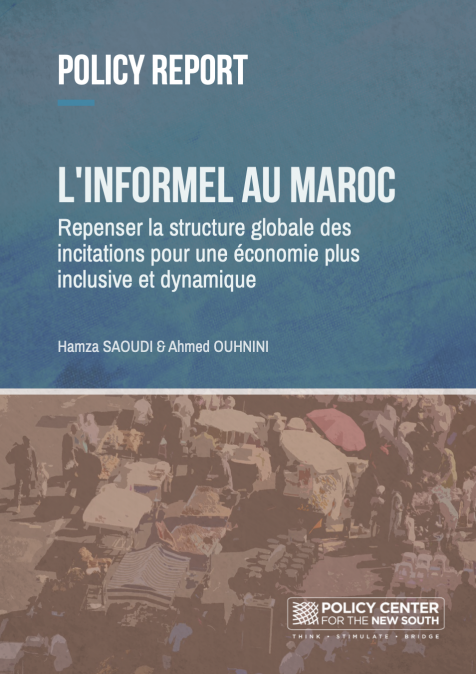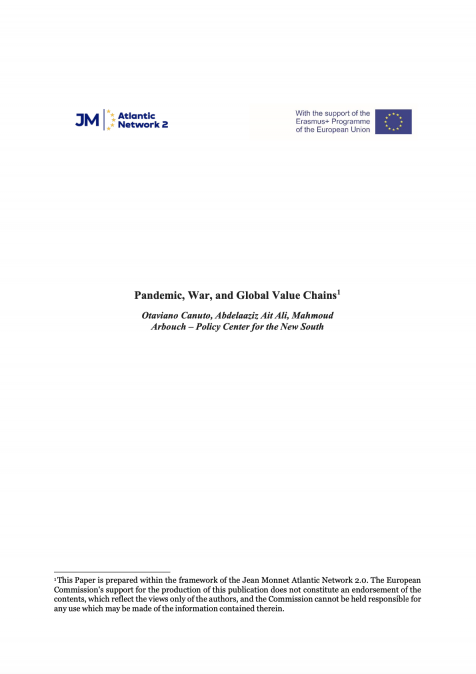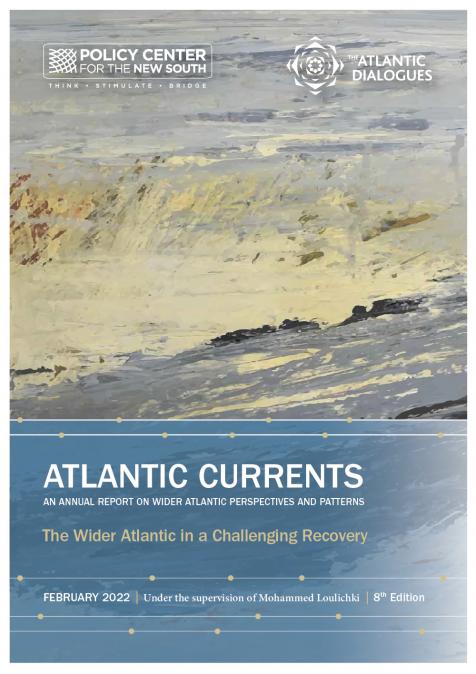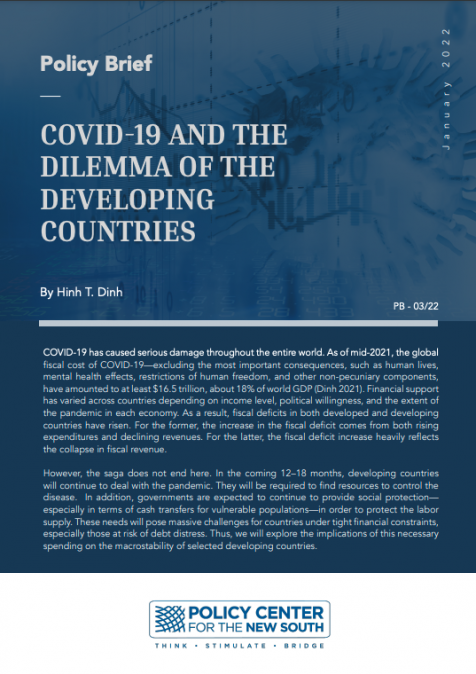Publications /
Opinion
The COVID-19 pandemic threatens to wreak more havoc in developing countries than in developed countries, because of the crumbling healthcare systems and infrastructures in the former, their inadequate budgetary resources, shallow financial systems, and weak government authority and capability. This impact has not yet shown up in cross-country data, possibly reflecting extensive under-reporting and/or less testing for COVID-19 done in developing countries. Policymakers in these countries must concentrate first on implementing health-related measures, then focus on economic measures to mitigate the negative economic impacts and support workers.
Health-Related Measures
Because the coronavirus spreads very fast through human contact, and currently there is no vaccine or cure, countries have relied on lockdowns, social distancing, quarantine, and isolation to deal with COVID-19. These measures aim to ‘flatten the curve’ so that the limited healthcare facilities and resources can accommodate patients without being overrun, which would result in unnecessary deaths because of inadequate care. In the absence of widespread testing and tracking, these are the best known methods to slow the spread, but the economic costs of these actions, especially on tourism, trade, and foreign investment, are massive.
Economic Measures
The unprecedented deceleration of economic activities has led to significant economic costs, including rampant unemployment. In Thailand, about 8 million jobs, or 20% of the workforce, had been lost as of mid-April. Moreover, the duration of the crisis and the speed of the subsequent recovery remain unknown, so it is difficult to assess the full extent of these costs. In this note, we assume that the crisis will last until the early summer 2020, followed by a quick recovery. The longer the crisis lasts, the more costly will be the damages.
Normally, countries in crisis could seek help from external resources, such as the World Bank and the International Monetary Fund, but the global nature and magnitude of this crisis are such that these external resources will be insufficient and need to be supplemented by domestic funding . Policy packages, for individual countries and global bodies, must be comprehensive, in order to match the immense magnitude of the problem . Fiscal policy must work to mitigate the adverse impact caused by a rapid deceleration of economic activities. Methods such as direct payments to taxpayers could go a long way towards helping individuals, especially unemployed workers. Canceled or delayed tax payments could help businesses cope with their losses. Monetary policy serves to provide an adequate flow of liquidity to businesses and households, and to ensure the government has adequate financing instruments to mobilize resources. All major central banks have now cut their interest rates, and some have stepped up the pace of their asset purchases. Many middle-income countries could also run into exchange-rate problems if their exchange rate regime is rigid and, in the face of a drop in exports and the rise of the dollar, they do not allow the exchange rate to depreciate, even as the pressures on the balance of payments could be eased, due to the recent drop in oil prices.
Helping Vulnerable workers Cope With the COVID-19 Pandemic
The pandemic adversely affects both the formal and informal sectors, but the most vulnerable group seems to consist of workers in the informal sector and/or part-time workers, unskilled youth, and school dropouts. Those in the hospitality and retail trade who have limited or no access to healthcare or social safety nets will be hit hard, and the sudden and large-scale loss of low paid work could drive a mass exodus of migrant workers from cities to rural areas. A protracted COVID-19 crisis may also threaten food security, especially for the most vulnerable group.
The priority now is to provide safety nets and securing access to food, medical supplies, and necessities for the most vulnerable group, especially workers who were recently laid-off due to the COVID-19 pandemic. In some countries, charities and volunteer organizations step forward to help affected workers. In Vietnam, for example, volunteers set up ATM machines in major cities to dispense the country’s staple, rice, to everyone who needs it. In addition, it may be necessary to establish temporary work programs for unemployed migrant workers, granting debt relief measures for businesses and individuals, and easing inter-regional customs clearance to speed up import and export of essential goods.
For the formal sector, the demand shock affects firms differentially in different sectors, and so governments need to target the worst-affected firms first. There are three types of firms: (i) firms with continuous demand (such as groceries and medical products); (ii) firms facing lost demand (including restaurants, travel, entertainment, transport, and tourism); and (iii) firms facing delayed demand (including consumer and producer products, and related business services). Firms in the first category do not need assistance, while those in the second and third categories are priorities for assistance. Those in the second category could be given one-off cash grants, while those in the third category could be given loans, as demand for their output is likely to bounce back. The current safety net program in each country should expand to at least cover the basic needs of workers in these firms.
The pandemic has brought to the fore how important domestic manufacturing is for national security, and has led some policy makers to insist that products critical to the health sector must be made domestically.
New demand for COVID-19-related medical products
Because of global connectivity, the risk of a resurgence of COVID-19 is high, and no country can assume immunity. As governments adopt pandemic-preparedness strategies for the future, the global demand for medical products will be sustained at least in the medium-term, creating new opportunities for manufacturing firms in both low-income (LICs) and lower middle-income countries (LMICs). Depending on how fast manufacturing firms can respond, they can contribute towards mitigating COVID-19, and can position themselves for potential long-term success by producing a variety of medical products.
Simple medical gear including facemasks, gloves, gowns, and simple medical equipment can be made by all developing countries. In order to survive the economic downturn, many SMEs are taking advantage of the severe shortage of these products by adjusting their factory production lines and retraining their workforce to produce simple medical products for local hospitals. Light manufacturing firms in the LICs and LMICs could do the same in the short term.
More complex medical equipment, including hospital beds, medical instruments including ventilators, and medical transport vehicles such as wheelchairs, vans, and ambulances, could be produced by firms in the metal products, machinery, electronics, automobile, and aircraft-parts sectors of LMICs. This has been done in the U.S., with auto and aircraft parts manufacturers adjusting production lines to produce ventilators. As countries such as Morocco and India already have well-established auto and aircraft clusters, they could diversify into these types of medical gear and vehicles. This would be consistent with the desire of some countries to be self-sufficient in the production of these products as a matter of national security, in the wake of COVID-19 crisis.
Many of the medical products needed to address COVID-19 are produced with well-known, off-the-shelf technologies that firms anywhere can purchase, if they have the skills and know-how to use them. Retooling could be encouraged through: (i) credit promised by the government so firms can continue to pay workers while they retool; (ii) easy access to information and availability of technologies; and (iii) efficient connectivity between critical parties (suppliers, medical facilities, and other buyers). In principle, manufacturing firms in LICs and LMICs should be able to do the same, but they are constrained by limited access to (ii) and (iii). This must be overcome if manufacturing firms are to capitalize on this new demand.
Demand for new production locations outside China
In the longer run, as awareness grows of the hazards of over-dependence on China for all manufactured products (from medical supplies and ventilators to iPhones), buyers and investors around the world will seek production locations outside China. Countries such as Morocco have a unique opportunity to use the economic downturn to position themselves as viable manufacturing locations. If firms can survive the looming recession, success will hinge on a sufficiently large, trained, and agile workforce that is cost competitive, and can efficiently fulfill large orders for medium and high-tech products. However, these firms often lack technical training in their workforce, largely because companies rarely invest in costly training. To address this, it might be beneficial for governments to provide financial assistance and training for workers during the downturn.
Government interventions
LIC and LMIC governments could design assistance programs for manufacturing firms to survive the downturn, bounce back faster and stronger, and diversify into higher-value production. Part of the government funding for this initiative could come from a thorough review of the existing public investment programs, leading to a reallocation of capital to current expenditure—this policy action could also be enhanced with foreign aid. Bilateral aid could also come from reshuffling the existing pipeline of projects and programs across all sectors.
Financial assistance to help firms retain employees will have to be disbursed in the short-term, but unless it is paired with technical assistance to facilitate retraining and retooling, the long-term benefits will be minimal. In the short term, a two-pronged aid package to help reorient firms in LICs and LMICs towards the production of simple medical gear and equipment for COVID-19 will be needed:
• Financial assistance: either in the form of grants or low-interest loans (low interest rates will help some firms, but access to bank loans might be constrained at this time) to manufacturing firms that retain at least a part of their workforce during the idle time.
• Technical assistance (especially for SMEs): composed of a toolkit that governments (including health authorities) could prepare, containing information about: (a) appropriate technologies used to make the medical products and equipment; and (b) where to purchase raw materials and other intermediate inputs.
The nature of support should also be contingent on how firm owners propose to use paid worker-time during the downturn in the next three months. Firms targeted for financing could include those that commit to retaining and retraining at least a portion of their workforce and: i) provide three months of paid worker time for retooling, specifically for COVID-19 products; ii) upgrade their equipment and facilities to expand production capabilities; and iii) undertake radical innovations that require new processes to produce more sophisticated products. These actions may not be all feasible during the lockdown, but could be taken during the transition period before a full resumption of all economic activities begins.









